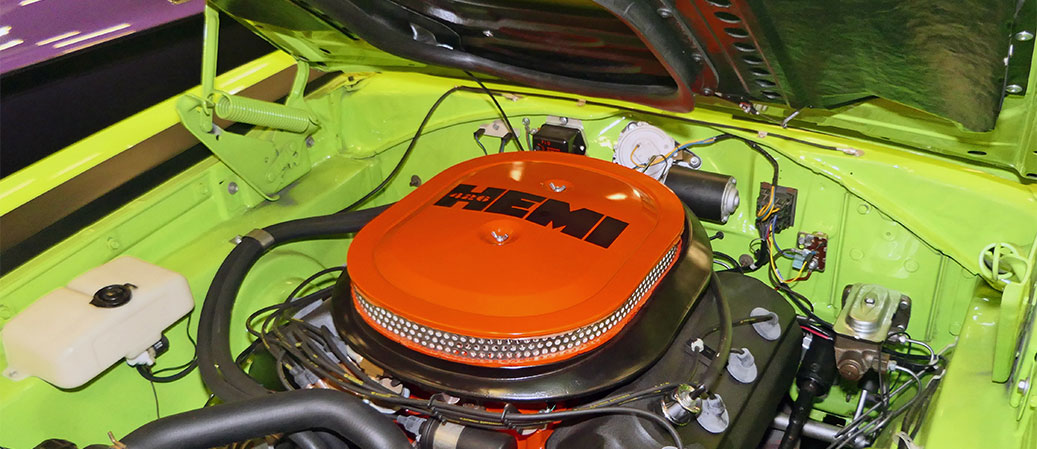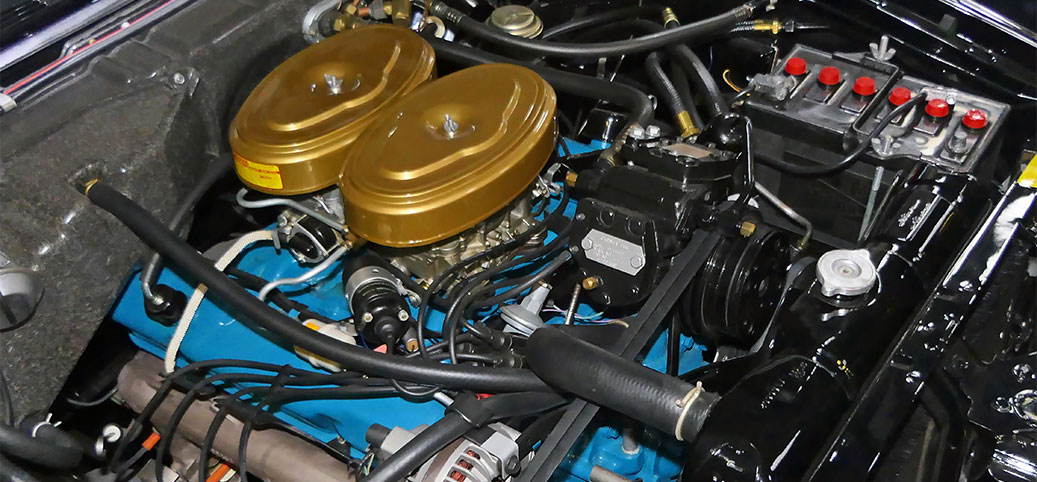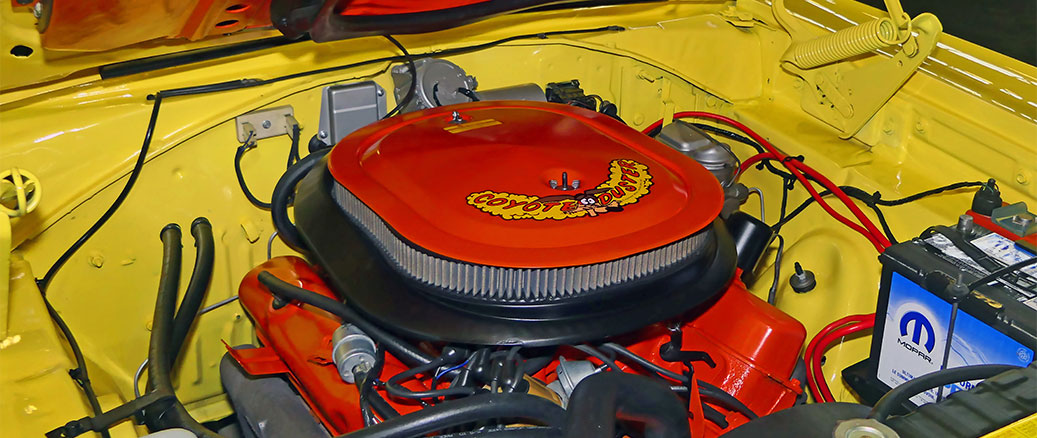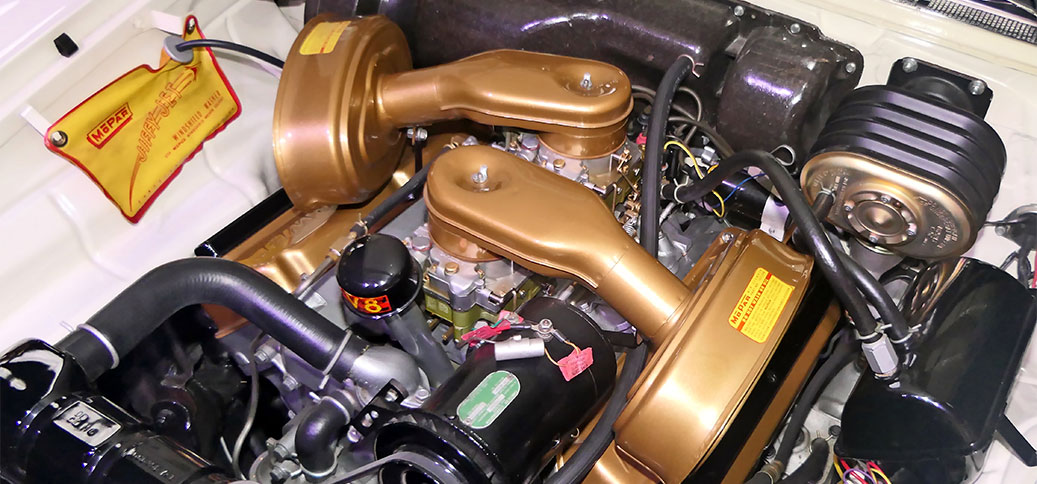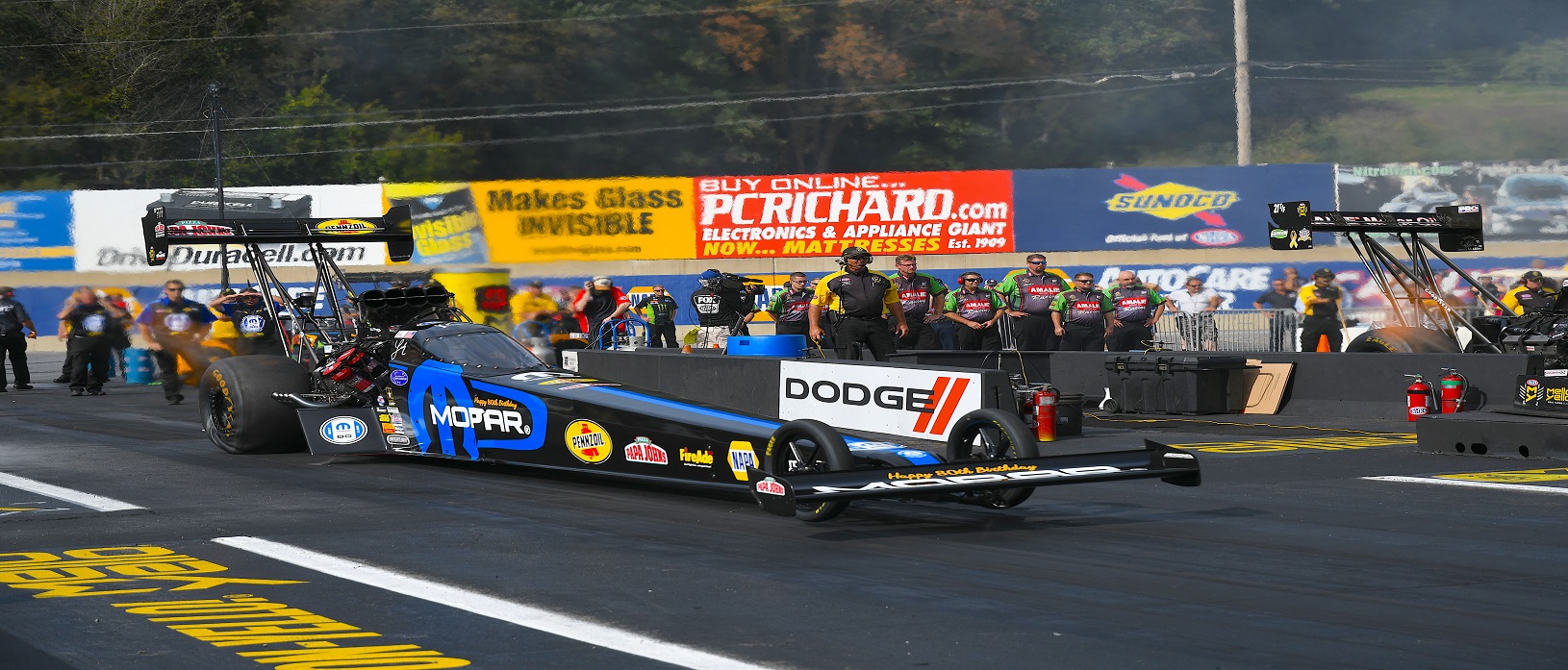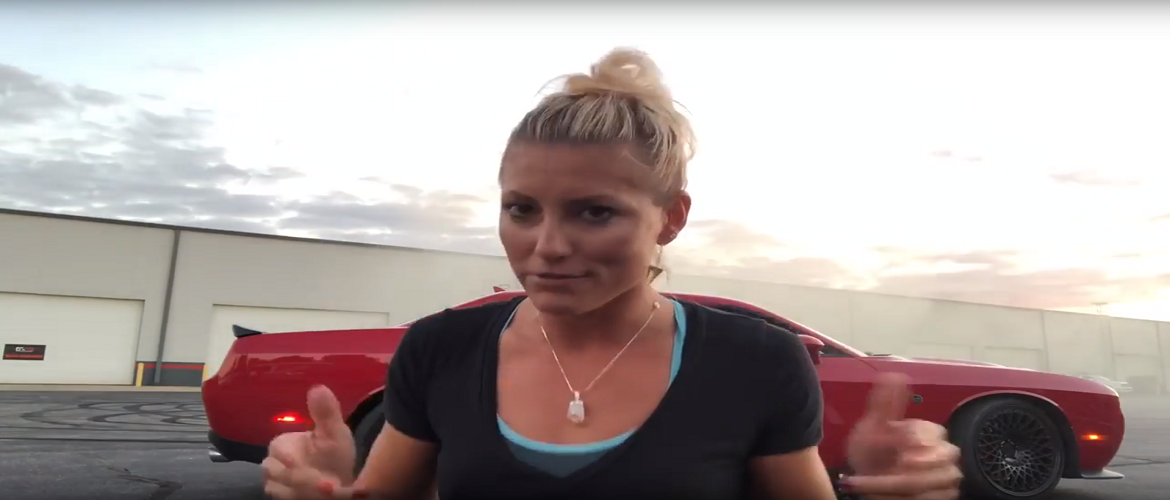The Power of Color
7 years ago Showcase
How Mopar® added a little color to make a big statement under the hood.
At any car show, cruise or event, a propped hood is more than just a peek behind the proverbial curtain. It’s an invitation to see just how much work has gone into ensuring the vehicle is true to form. Transparency in its purest form.
Under any muscle car hood of the early ’70s are the inner workings of the vehicle power station. The gears that grind, the pistons that churn, the belts that drive … the elements that, as a whole, put the power behind the ride. But, if the vehicle nameplate says Dodge, Plymouth or Chrysler – or, if the engine says Mopar® somewhere on it – you can rest assured that you’ll see a splash of color on the block.
While most open hoods today reveal only monochromatic black (and darker black) parts, Mopar, through the years, has included colored paint schemes to their engine blocks that have instantly said, “this is a Mopar engine”. Color that has come to represent power and street cred. Tough, nearly impenetrable, quick-drying enamel paint on the engine block that served as color code, identifying the engine as one of ours.
RACE HEMI® (ENGINE) ORANGE
Mopar (P4120751) was the bright orange color you’d find on the 1962-64 Max Wedge engines. The popular shade also found its way onto the 1964-65 426 Race HEMI® engines and the 413 and 426 Cross Ram truck engines. The color came to signify power during the era and is still used today on new HEMI engines. Earlier (from the ’40s to the ’60s, Mopar P4529148) “Aluminum Silver” was used to paint Poly engines. Silver was also prevalent on flathead 6 engines, separating the block from the high compression heads that were generally painted bright red.
STREET HEMI (ENGINE) ORANGE
A darker reddish orange paint (Mopar P4349216) was used in a performance engine capacity from 1966 to 1971. This darker shade would eventually come to be what is now known as “HEMI (engine) Orange.” From ’69 to ’71, it would have been found on the high-performance 383 and 440 engines, and the 340 engines that became popular in the early ’70s.
TURQUOISE RISING
This medium blue-green color (Mopar P4120752) was used on all “B/RB” big block engines during 1962-71 with the exception of the 1969-71 high-performance 383/440 engines, which were painted Street HEMI (engine) Orange. The turquoise color should not be confused with the traditional “Mopar” blue paint (no Mopar number available) that tended to turn a shade of turquoise with heat and was used on a lot of 340 and other LA engines in late ’69. Most restorers prefer the Street HEMI (engine) Orange when they repaint their blocks.
YELLOW IN THE BELLY
Mid-1963 to mid-1969 Slant 6 truck engines (ONLY) were painted yellow (Mopar P4529144). This screaming banana yellow color stands out under the hood (especially when kept clean). It gets your attention and it means business.
BACK IN BLACK
Of course, like the little black dress, there is nothing that looks more classic than a black paint job. In 2.2L engines from 1981 to present, and in 318 and 360 engine blocks that go back to 1983, you’ll find that black (Mopar P4120753) became the color choice. While a splash of color is nice once in a while, nothing seems to make silver chrome and gray steel pop like dark black. While Mopar has recently re-adopted the practice of painting engine blocks (you’ll even find the new 707-horsepower 6.2L Hellcrate HEMI engine is painted in traditional Street HEMI [engine] Orange), bringing color under the hood began long ago. And, while often just an afterthought of the vehicle owner, the true enthusiast can tell if the engine fits the vehicle by the color under the hood.

